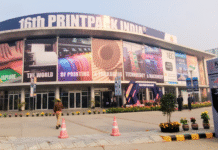Exchange4media and the Dainik Bhaskar Group recently hosted a webinar on ‘All eyes on Bharat: growth potential unlocked’ to debate the untapped prospects of tier-II and tier-III cities.
Bharat is used in this context to contrast with and alleviate the bias by brand owners and media planners for the big cities and the English speaking media. Comprised of non-metros and rural India, it has seen an unprecedented change in how it consumes media in the past six months, according to the Dainik Bhaskar group. Girish Agarwal, promoter-director, Dainik Bhaskar Group, remarks, “The September GST collection has shown a growth of 3% over last year. In the small-town markets, the growth is around 10% in the past twelve months. The market has come back sooner and with more vigor than expected.
Consumer durables and auto categories have seen a huge demand. All Indian language newspapers have come back to 85-90% circulation and 80% advertising.”
October has been a bumper month for many sectors due to the upcoming festive season, which sees increased spending. Vaishali Verma, chief executive officer, Initiative remarks, “Almost 50-60% sales of eCommerce giants this festive season was from small towns. 60-65% sellers on these platforms were from tier-II, tier-III and tier-IV cities.”
Local area planning – the need of the hour
According to the webinar panel, Bharat has tremendous untapped potential, which can be unlocked by understanding each region’s nuances. Local market planning helps brands tap into the marketing opportunities available in specific areas, make informed decisions, and select promotional activities that will create maximum impact for their brand in the chosen market.

Satyajit Sengupta, CCSMO – Sales & Marketing, Dainik Bhaskar Group, says, “The crux of our revenue rests on how to get the customer back to the advertiser. The advantage that the vernacular language newspapers have, apart from the credibility and trust, is understanding the markets. We break the market into regions and cities and then work on a solution based on the context, communication, what works in a particular market, and the advertiser’s need. Result-oriented, accountability-based models have helped in
the kind of response we have got during the festive season.”
Verma adds, “People in tier-II and tier-III cities rely a lot on publications to educate themselves. Planners and buyers must spend a lot of time understanding the nuances of the market. The next level of growth will come from more customization.”
Media strategy for brands
With the increased consumption of digital media during the pandemic and the print’s recovery in the past few months, it has become indispensable for the brands to come up with a unique mix of radio, TV, print, and digital advertising to ensure ROI on every marketing penny spent.
Verma adds, “Television and print have different roles to play. Both work in tandem, even for smaller cities. You use television for brand building, emotional connection, long-term awareness, and sustaining the campaign. Print is excellent for promotion, partnerships, and on-ground activation. One needs to understand the objective, and then accordingly devise the best media mix.”
Brands need to build their trust and brand equity to script their growth story in the Bharat areas. Gulbahar Taurani, vice president, Philips Personal Health, Indian Subcontinent, observes, “Brands have to be responsible and be available when consumers need them. There is aspiration and potential in the tier-II and tier-III cities. It is up to the brands to identify and tailor-make solutions for these aspirations and not follow a one-size-fits-all approach. Bharat is fundamental to any brand’s growth now.”
Brands should articulate a clear vision of what they want out of a marketing campaign to both the marketing agency and the publication. Yadvinder Singh Guleria, director – Sales and Marketing, Honda Motorcycle & Scooter India, expressed his view that there needs to be a collaborative approach between media planners, marketers, and marketing agencies. “We need to trust the regional office with the professional inputs and finally pick up a mix of the media based on season, product, market, target audience, and expert input,” he points out. This integrated partnership will yield the best results in the long term.















